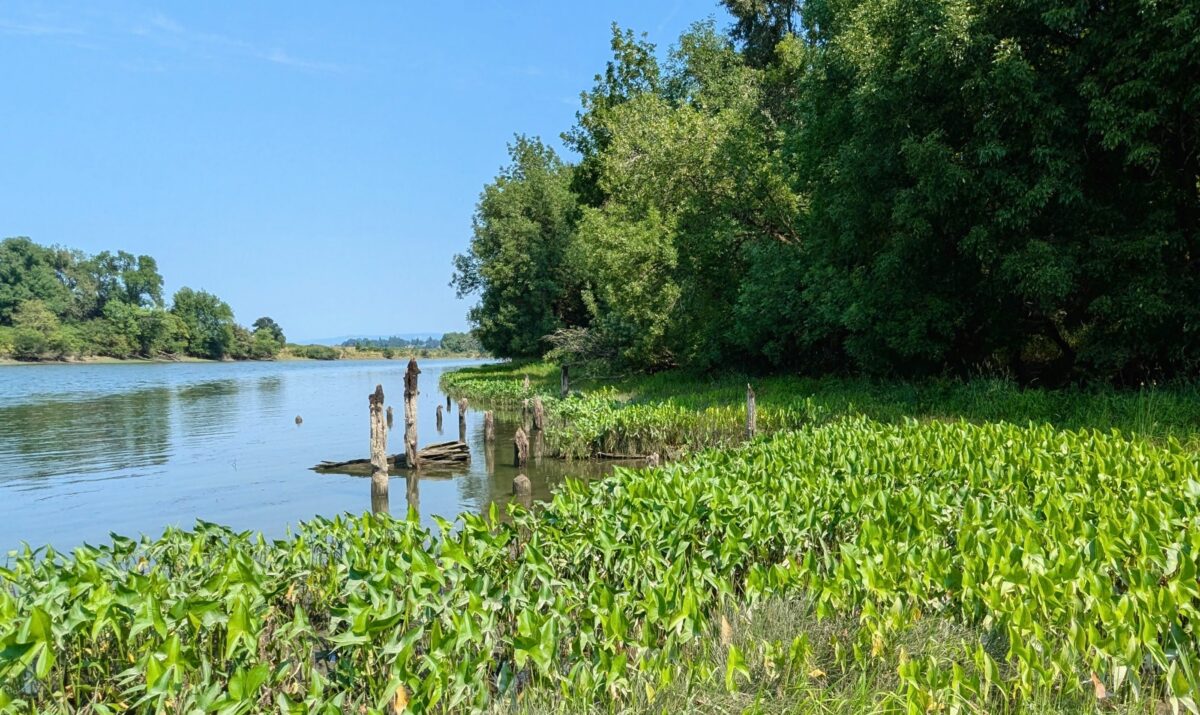Conserved Land Will Benefit Wildlife and Water Quality
41 acres include nesting habitat for bald eagles, purple martins, and more
This November, Columbia Land Trust conserved a 41-acre site along Lake River, a side channel of the Columbia River near Ridgefield, Washington. This site is relatively small, but mighty in terms of habitat connectivity for animals and birds, as Ridgefield National Wildlife Refuge is immediately to the west and Clark County’s Flume Creek Natural Area is located to the east.
The riparian forest here is within the floodplain and dominated by black cottonwood, Oregon ash, and red alder (Alnus rubra) with Oregon white oak (Quercus garryana) scattered throughout. Many species of birds use this habitat. Notably, bald eagle, purple martin, and great blue heron have breeding and nesting areas in the vicinity.
“This small sliver of land could easily have been forgotten and left to grow weedier and less healthy over time,” said Land Trust Conservation Lead Jocelyn Tutak. “Instead, it has been conserved and will serve as a corridor for wildlife between Ridgefield’s forested creeks and the Refuge, providing quality habitat and enhancing the community’s natural areas.”
In addition to protecting open space and riparian area within a rapidly urbanizing part of Washington State, this project provides habitat and landscape connectivity between existing protected areas, which helps wildlife to thrive. The conservation of this site could also create opportunities for the Land Trust to restore fish habitat in the long term, as Flume Creek and Lake River both have documented Coho and Steelhead presence, and Fall Chinook are also known to utilize Lake River.
The Land Trust’s conservation vision in the Columbia River Lowlands/Willamette Valley/Puget Trough region includes healthy and functional rivers and wetlands, as well as habitats connected through urban and rural areas that are permeable to wildlife.
Our work at this newly conserved site will allow us to grow existing partnerships with neighboring natural area managers US Fish and Wildlife Service (USFWS) and Clark County. This aligns with our long-term goal of advancing collaborative conservation.
Our stewardship goals are to maintain, restore, and enhance riparian forest and wetland habitat. There are some invasive weeds present at Flume Creek that we will manage, including blackberry and reed canarygrass, but previous restoration efforts have kept these non-native species in check and helped to strengthen the site’s ecological health.
As stewardship staff continue to get to know the land, we will monitor for signs of emerald ash borer and evaluate opportunities for reforestation and creek restoration.
“We look forward to improving the ecological function here to benefit water quality and wildlife habitat,” said Tutak. “The Land Trust is proud to have protected these lands and waters to preserve habitat and increase resiliency.”
